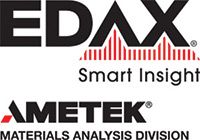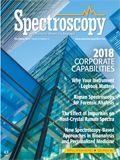EDAX, Inc.
Company Description
EDAX is a leading provider of innovative materials characterization systems encompassing energy dispersive spectrometry (EDS), wavelength dispersive spectrometry (WDS), electron backscatter diffraction (EBSD), and X-ray fluorescence (XRF). EDAX products include standalone tools for EDS, EBSD and WDS, and integrated tools for EDS/EBSD, EDS/WDS, and EDS/EBSD/WDS. The company offers several XRF and micro-XRF elemental analyzers for small and microspot X-ray analysis and mapping. The XLNCE X-ray metrology line provides in-line instrumentation for process control and yield management for coating applications. EDAX develops the best solutions for micro- and nano-characterization, where elemental and/or structural information is required, making analysis easier and more accurate. EDAX designs, manufactures, distributes, and services products for a broad range of industries, educational institutions, and research organizations.

Chief Spectroscopic Techniques Supported
- Energy dispersive spectroscopy (EDS)
- Energy dispersive X-ray fluorescence (XRF)
- Electron backscatter diffraction (EBSD)
- Wavelength dispersive spectroscopy (WDS)
Markets Served
EDAX instrumentation for elemental and structural analysis is found in a broad spectrum of industrial, academic, and government applications from the field or production line to the most advanced research and development laboratory. Typical markets served include semiconductor and microelectronics, academic and industrial R&D laboratories, RoHS/WEEE renewable energy, pharmaceuticals, mining, forensics, petrochemicals, metallurgy, and manufacturing operations.
Major Products/Services
- Energy dispersive X-ray fluorescence: EDAX manufactures XRF analyzers both for the laboratory and for coating analysis in industry.
- Electron backscatter diffraction: EDAX supplies instrumentation for materials structural analysis on scanning electron microscopes (SEM).
- Energy dispersive spectroscopy: EDAX provides a full range of EDS products for elemental analysis on SEMs.
- Wavelength dispersive spectroscopy: EDAX offers parallel beam WDS products for elemental analysis on SEMs.

Facility
EDAX headquarters is located in Mahwah, New Jersey, housing sales, engineering, technical support, and operations. EDAX is committed to providing the best possible support for our customers world-wide with sales, service, and applications support offices located in Japan, China, Singapore, The Netherlands, Germany, the United Kingdom, and the United States.

EDAX Inc.
91 McKee Drive
Mahwah, NJ 07430
TELEPHONE
(201) 529-4880
FAX
(201) 529-3156
E-MAILinfo.edax@ametek.com
WEB SITEwww.edax.com
YEAR FOUNDED
1962

New Study Reveals Insights into Phenol’s Behavior in Ice
April 16th 2025A new study published in Spectrochimica Acta Part A by Dominik Heger and colleagues at Masaryk University reveals that phenol's photophysical properties change significantly when frozen, potentially enabling its breakdown by sunlight in icy environments.